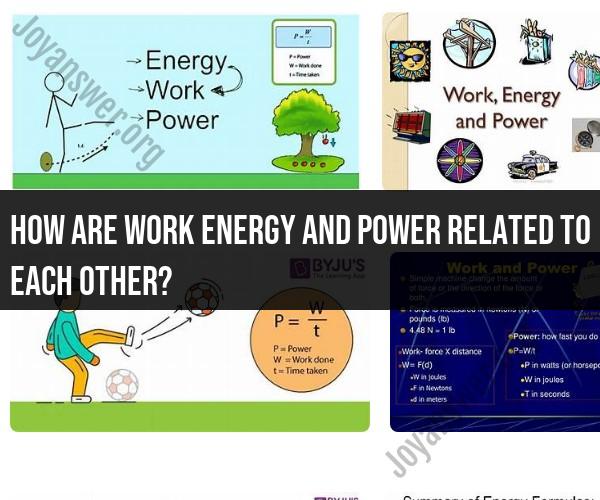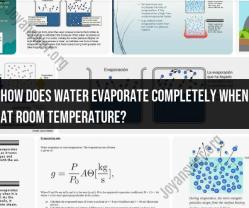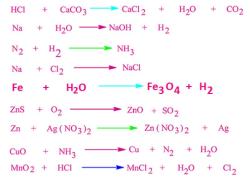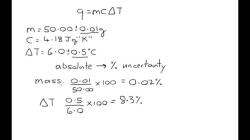How are work energy and power related to each other?
Work, energy, and power are interconnected concepts in physics that describe the transfer and transformation of energy in various physical processes. Here's how they are related to each other:
1. Work (W): Work is a measure of the energy transferred to or from an object by the application of a force along a displacement in the direction of the force. Mathematically, work is defined as:
W = F * d * cos(θ)
Where:
- W is the work done (measured in joules, J).
- F is the force applied (measured in newtons, N).
- d is the displacement of the object (measured in meters, m).
- θ is the angle between the direction of the force and the direction of the displacement.
2. Energy (E): Energy is a scalar quantity that comes in various forms, such as kinetic energy, potential energy, thermal energy, and more. It is the capacity to do work or produce an effect. The total mechanical energy (E) of an object is the sum of its kinetic energy (KE) and potential energy (PE):
E = KE + PE
Kinetic Energy (KE): The energy of motion and is given by the formula KE = (1/2) * m * v^2, where m is the mass of the object and v is its velocity.
Potential Energy (PE): The energy associated with an object's position relative to a reference point or due to forces acting on it. The most common forms are gravitational potential energy and elastic potential energy.
3. Power (P): Power is the rate at which work is done or the rate at which energy is transferred or transformed. Mathematically, power is defined as:
P = W / t
Where:
- P is power (measured in watts, W).
- W is work done (measured in joules, J).
- t is the time taken to do the work (measured in seconds, s).
Relationships:
Work and Energy Relationship: Work done on an object or by an object results in a change in its energy. If work is done on an object, its energy increases, and if work is done by an object, its energy decreases.
- When a force does work on an object, it transfers energy to the object, increasing its kinetic or potential energy.
- When work is done against a force (e.g., lifting an object against gravity), energy is transferred from the object to the work being done, decreasing the object's energy.
Power and Work Relationship: Power measures how quickly work is done. It's the rate of energy transfer. The more work done in a given amount of time, the greater the power.
- High power means a large amount of work is done in a short time.
- Low power means a small amount of work is done in the same time.
In summary, work is the transfer of energy, energy is the capacity to do work, and power measures the rate at which work is done or energy is transferred. Understanding these concepts helps describe and analyze various physical processes and systems.
Exploring the Relationship Between Work, Energy, and Power
Work, energy, and power are three fundamental concepts in physics. They are all related to each other, but they have different meanings.
Work is defined as the transfer of energy from one system to another due to the application of a force. It is measured in joules (J).
Energy is the ability to do work. It is measured in joules (J).
Power is the rate at which work is done. It is measured in watts (W).
The relationship between work, energy, and power can be expressed by the following equations:
- Work = Force * Distance
- Energy = Work
- Power = Work / Time
Work-Energy Theorem: Understanding the Transfer of Mechanical Energy
The work-energy theorem states that the net work done on an object is equal to the change in its kinetic energy. This means that the work done on an object will either increase or decrease its kinetic energy, depending on the direction of the force.
The work-energy theorem can be expressed by the following equation:
W_net = ΔKE
where:
- W_net is the net work done on the object
- ΔKE is the change in kinetic energy of the object
Calculating Power in Various Work and Energy Scenarios
Power can be calculated in a variety of work and energy scenarios. For example, if you know the work done and the time it took to do the work, you can calculate the power using the following equation:
Power = Work / Time
For example, if you lift a 10 kg box a height of 1 meter in 5 seconds, you have done 100 joules of work. The power you used to lift the box is:
Power = 100 J / 5 s = 20 W
You can also calculate the power using the work-energy theorem. For example, if you know the change in kinetic energy of an object and the time it took to change the kinetic energy, you can calculate the power using the following equation:
Power = ΔKE / Time
For example, if a car accelerates from 0 to 60 mph in 5 seconds, the change in its kinetic energy is:
ΔKE = 1/2 * m * v_f^2 - 1/2 * m * v_i^2 = 1/2 * 1500 kg * (60 mph)^2 - 1/2 * 1500 kg * (0 mph)^2 = 2250000 J
The power the car used to accelerate is:
Power = 2250000 J / 5 s = 450000 W
Power is a useful quantity to know in many different situations. For example, it can be used to design engines, motors, and other devices. It can also be used to calculate the energy efficiency of appliances and other devices.











